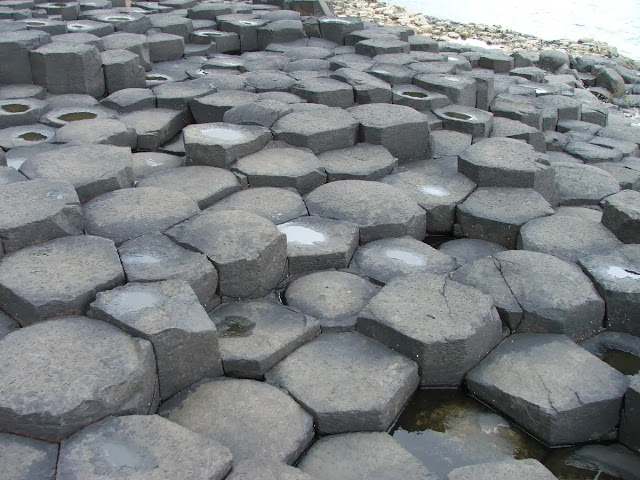Dinocochlea: Mysterious Giant Snail!
 |
| Left: Apical whorl of the large dextral specimen of Dinocochlea. Right: A model of Dinocochlea with Natural History Museum research scientist Paul Taylor as a scale. |
Dinocochlea, often referred to as "Dinocochlea ingens," has been a subject of intrigue in the paleontological community due to its mysterious nature. Initially discovered in 1921 during road construction in Sussex, England, it was first thought to be:
A Giant Snail: The name "Dinocochlea" translates roughly to "terrible spiral" or "giant snail," reflecting its initial interpretation as a fossilized gastropod shell. This theory was based on its spiral shape, which seemed to resemble a gastropod shell but on a massive scale, leading to claims of it being the largest gastropod ever.
Fossilized Dung (Coprolite): Another early theory suggested it might be fossilized dung, given its spiral shape, which could be reminiscent of how some animal dung forms, especially considering the context of the Wealden area known for dinosaur fossils.
However, subsequent research and analysis led to a different understanding:
A Worm Burrow Concretion: By 2009, the consensus shifted towards interpreting Dinocochlea as a concretion formed around the burrow of a worm. This theory posits that the burrow acted as a nucleus, much like a grain of sand in a pearl, around which minerals precipitated over time, creating the large, spiral structure. This explanation accounts for the lack of shell traces or organic material that would be expected in a true gastropod or coprolite.
Ichnofossil: Recent discussions have also considered Dinocochlea as an ichnofossil, which is a trace fossil showing the activity of an organism, rather than the organism itself. This aligns with the worm burrow theory, suggesting that what we see is not the organism but its activity preserved in rock.
Educational Approach:
The story of Dinocochlea could be used in education to teach critical thinking, the scientific method, or the history of science.
The history of the find is pretty interesting since the hypotheses that have been given for its identity include (in order of their proposal):
- It is a fossil of aFREAKISHLY big snail!
- It is a coprolite, a.k.a the remnant of a giant turd (most likely from an Iguanodon).
- It is a concretion fossil formed from the indents left underground by a spiraling path of a very small burrowing most likely worm-like organism.
The specimen didn't look quite right to be a gastropod, since the contours of proper fossils usually exhibited certain biological nuances (as well as traces of materials from the shell). As well, the direction of the spiral was also odd - it seemed as if these Dinocochlea specimen could spiral either way, which is actually quite odd for gastropods.
While being convinced that it was not a snail, Cox was unable to reach a firm conclusion about the true identity of Dinocochlea. However, he did entertain alternative hypothese. That it is an enormous coprolite, perhaps the fossil excrement of the dinosaur, Iguanodon, the bones and teeth of which had been collected at the nearby Hollington Quarry. Spiral coprolites are known as fossils, mostly excreted by sharks with spiral valves in their lower intestines, but none come remotely close in size to Dinocochlea. Neither does Dinocochlea contain any of the expected remains of partly ingested food.
The last hypothesis involved a fossil type known as a concretion. Essentially what might have happened here, is that long long ago, there was a remnant of a thin spiral path left in the dirt by some burrowing creature. This would have left small but physically present shifts in the grains of sand, minerals, and rock around that path, which in turn provide potential spaces for mineral cements to seep into during the process of sedimentation. Over the years, these would become squeezed into what might look like a mini spiral fossil - similar in structure to a really thin spiral drinking straw.
However, these hard concretions inevitably shift the sedimentary rock that they are in, potentially creating other spaces for more mineral cement to come in. The net effect is that if the conditions are right, and if you wait long enough, concretion specimens will act like nuclei and will get "fatter." In other words, if you imagine the dimensions of a drinking straw getting wider, it might eventually look like our Dinocochlea specimen!
Dinocochlea was featured in the final episode of the 2010 BBC series Museum of Life which documented the work of the Natural History Museum.



%20(1).webp)




